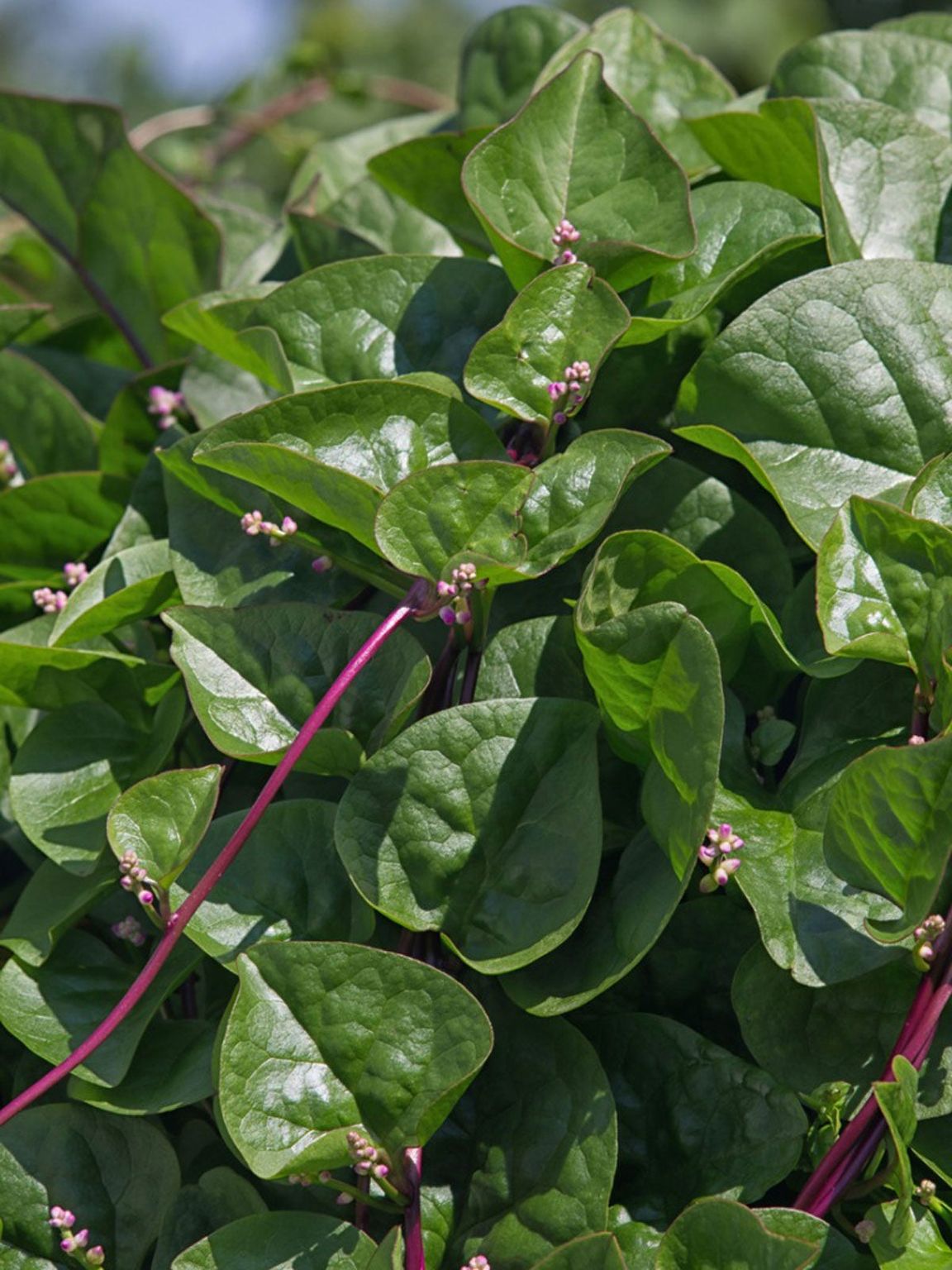
Malabar Spinach
Basella alba
Basic Information
🌿 Family: Basellaceae🗺️ Zone: 9-12
Other Names:
- Ceylon Spinach
- Climbing Spinach
- Indian Spinach
🌡️ Ideal Temperature : 65°F – 95°F
🔥 Heat Tolerance: Up to 100°F
❄️ Cold Tolerance: Down to 50°F
🌱 Type: Perennial
Layers
- Vine
Functions
- Edible
- Medicinal
- Wildlife Attractor
- Mulcher
- Dynamic Accumulator
- Erosion Control
- Border Plant
- Ground Cover
Pests
No pests associated with this plant.
Description
Malabar Spinach (Basella alba) is a fast-growing, climbing vine with thick, fleshy, green or purple stems and dark green, heart-shaped leaves. Unlike traditional spinach, it thrives in hot, humid climates and is a popular leafy green in tropical regions. It has a slightly mucilaginous texture, making it useful for soups and stir-fries.
The plant grows best on trellises or fences, where it can climb and produce an abundance of edible leaves. It is also a great summer alternative to traditional spinach, which struggles in heat. In cooler climates, it can be grown as an annual.
🌞💧 Sun and Water Requirements:
- Prefers full sun but tolerates partial shade.
- Thrives in warm, humid conditions and requires regular watering.
- Prefers well-draining, loamy, or sandy soil with high organic matter.
✂️🫘 Methods to Propagate:
- Seeds: Soak seeds overnight and plant directly in warm soil; germination may take 7-14 days.
- Cuttings: Propagates easily from stem cuttings rooted in water or soil.
- Layering: Stems that touch the ground may root naturally.
🧑🌾👩🌾 When to Harvest:
- Leaves can be harvested continuously once the plant reaches 30 cm (12 inches) in height.
- Regular harvesting encourages bushier growth.
- Avoid harvesting too much at once to maintain plant vigor.
Purpose
Malabar Spinach serves multiple functions in a permaculture system:
- Edible: A nutritious leafy green high in vitamins A and C, calcium, and iron.
- Medicinal: Used in traditional medicine for digestive and anti-inflammatory benefits.
- Wildlife Attractor: Produces small, purple berries that attract birds.
- Mulcher: Cut leaves and stems can be used for mulching.
- Dynamic Accumulator: Draws up beneficial nutrients to improve soil health.
- Erosion Control: Root system helps bind soil in sloped areas.
- Border Plant: Used along garden edges or fences for vertical growth.